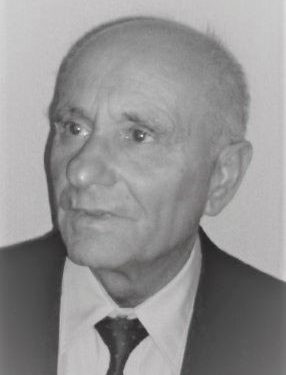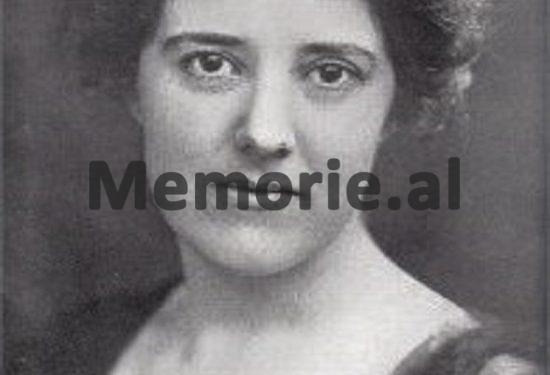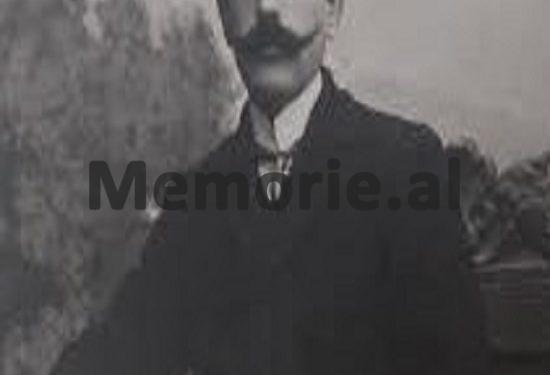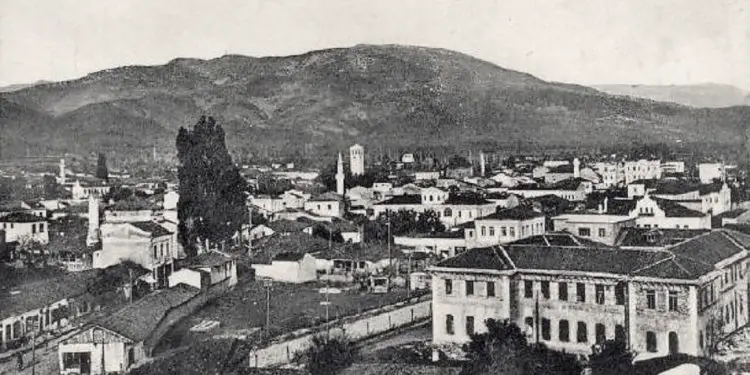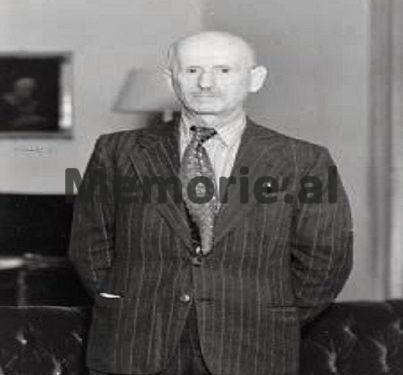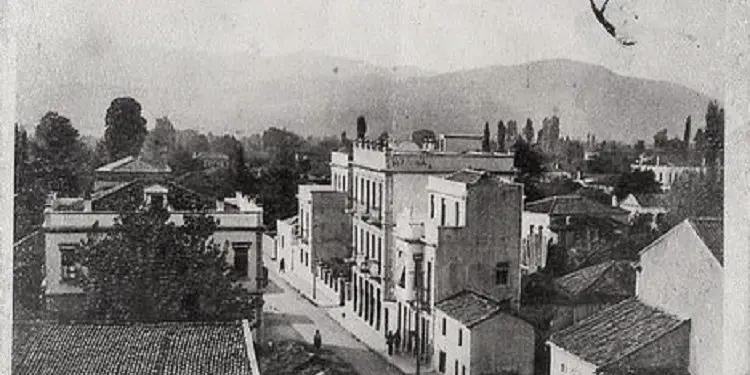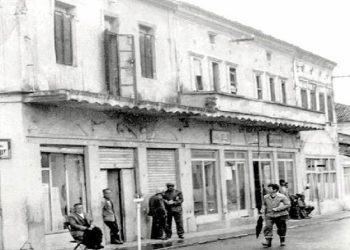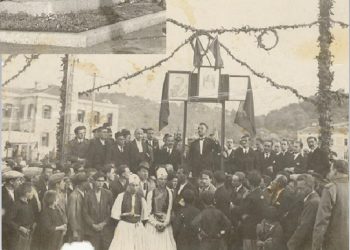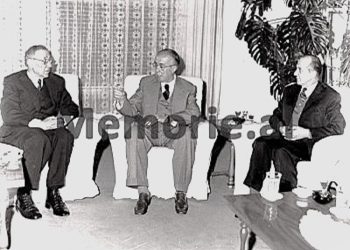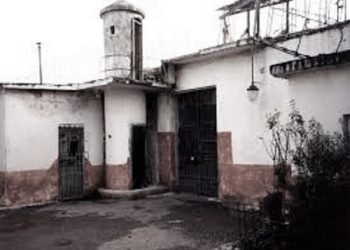By Sven Aurén
Translated by Adil N. Bicaku
Part twenty
ORIENTI EUROPE
Land of Albania! Let me bend my eyes
On thee, thou rugged nurse of savage men.
Lord Byron.
In the book “Orient of Europe”, the author of the work is the Swede Sven Aurén. They are impressions of traveling from Albania from the ‘30s. His direct experiences without any retouching.
In a word, the translation of the book will bring to the Albanian reader, the original value of knowing that story that we have not known and we continue to know it, and now distorted by the interests of the moment.
Now a little about what these lines address to you: My name is Adil Bicaku. I have worked and lived for over 50 years in Sweden, without detaching for a moment, the thought and feeling from our Albania.
I am now retired and living with my wife and children, here in Stockholm. Having been for a long time, from the evolution of the Albanian language, which naturally happened during these decades, I am aware of the difficulties, not small, that I will face, to give the Albanian reader, the experiences of the original.
Therefore, I would be very grateful if we could find a practical way of cooperation together, to translate this book with multifaceted values.
Morally, I would feel very relieved, paying off part of the debt that all of us Albanians owe to our Albania, especially in these times that continue to be so turbulent.
With much respect
Adil Biçaku
Continued from the previous issue
It is said that in all the cities around the globe, there is an English original. In Elbasan the original is female and is called Haslock: a lady with masculine features and indefinite age and clear views, which photographs and catalogs everything that can be counted as Albanian ethnography and lives in the country, for many years quite respected. We paid a visit to this prominent lady, who invited us to sit around a slippery wooden table and have a cup of tea, and then she started an ethnographic lecture, with a dictionary of a very rich nature.
Of course we listened very carefully to her stories about the types of cradles in Elbasan and the surrounding area; however I could not escape not being distracted, from an object in one corner of the room. There was a latest model short military rifle. I imagined Mrs. Haslock, how she wanders the streets of Elbasan with this carbine, to make the date, with her on her back, she seems to still overestimate the aggression of disgusting men. When she was forced to pause, I hurried to ask her a flashing question:
-It is really such a concern here in Elbasan that you have to carry with you such an arsenal there, Mrs. Haslock?
She looked surprised.
-Ah, you mean the rifle? She is not mine. It’s Ali…
At that moment the door opened and Ali went inside, with a tea tray in his hand. Ali belonged to the gendarmerie and wore a closed green military uniform, with the initials of King Zog on the hats. It was the gift of the Albanian government to Mrs. Haslock. He accompanied him wherever he went; he was the loyal yard dog and the inseparable companion. In addition to his military duties, he functioned as a cook, waiter, cleaner, and porter. Mrs. Haslock and Aliu, formed an inseparable couple, known in half of Albania. When they undertook expeditions in the past, they were like an Albanian Don Quixote and Sanço Panço, rushing towards the mystique of ethnography.
But when Ali left again and we were sitting and stirring the cups of tea, it seemed as if Albania was gone too. We were no longer in Elbasan, but in the aftermath of an English provincial town, where we heard the description of the valuable things of the province, from the lady of the house. But soon Albania reappeared again, this time in the form of a friendly smiling gentleman, who I could swear was a manufacturer from the province of Jënnkpingping, if he did not have a black religion on his head. This little gentleman found out that he was a very prominent acquaintance: Lef Nosi, the Minister of Post-Telegraph in the government of Vlora of Ismail Qemali, a member of an old rich family of Elbasan, an ardent patriot, who has been twice in prison, for tongue-in-cheek and for reasons of currents.
Elbasan has always been known as an intellectual center. Lef Nosi worked for the city’s ‘Normal’ school in a way that attracted attention in the international arena. As a token of gratitude for this contribution, he was appointed as a member of Albania’s first government. But Albania is an incomprehensible and inconsistent country and Lef Nosi, did not become Minister of Education, but took over the post-telegraph service, which at that time should not have had more than a few boxes of stamps and a roller telegraph.
Later he was seized by a fatal passion, to write his name under the high patriotic but insurgent manifesto, which resulted in the involuntary study of everything other than the unsatisfactory condition of the country’s prisons. These studies refreshed to a certain degree his political zeal, and he passed on to the quiet, collector’s life. His house is unique in its kind. That is, he has chosen as a task of life, to collect a copy of everything that is found in Albania, so that, as it were, in old age, to live in an Albanian concentrate and not have any reason to go abroad.
Lef Nosi through his arrival threw to us an interesting and more Albanian light. He told entertaining stories, about Esad Pasha and Wilhelm av Wied revealed himself, that he was a distinguished connoisseur, of what was played behind the political scenes. It seemed that he was very interested in the psychology of the Albanian people. Naturally, our conversation slipped into bravery and spiritual strength, which is such a distinctive feature of the popular character, and Lef Nosi gave color and essence to his analysis, by telling stories about the cold-bloodedness and contempt of death for Albanians. This was a small incident, among other things:
A villager went shopping with his little boy. They passed from one counter to another, and the child’s eyes gleamed with joy, of all the strange things he saw. When an arms dealer passed by, the boy took the opportunity to grab a nice knife, but the dealer was alert and quickly grabbed the boy’s hand.
-Why do not you address me, my dissatisfied father wanted to know. I would pay for the knife.
Why do you break my boy’s hand?
And with that thought the father very nervous, the behavior was wrong. It was the first time that his son took action on his own initiative. With this action it is endangered, that the boy loses courage and later, does not have the courage to undertake any courageous deed. A man who will not perform bold deeds of bravery is not a man. An Albanian must show his courage, in all circumstances.
It is also extremely rare that any exception to this rule is made, points out Lef Nosi. I remember a small episode from the Balkan war in 1912.
A great battle had taken place in the province of Shkodra and after the end of the fighting, a Serbian doctor checked the dead. An Albanian was lying there, with both hands cut off. His legs were paralyzed; the only thing he could play was his head. And he used it decisively. When the doctor bent down to check on him, he took the opportunity and bit him on the little finger of his left hand. He considered the doctor as an enemy.
The contempt for death that Albanians have, has an impressive meaning, continues the former minister. It means that death in itself has no meaning. What matters is how you die, if you can part with this world with honor, but that at no point, let go of pride and composure. A man, who dies as a poor man, spreads shame on his tribe, up to the third and fourth generation. It is bad to be a thief and a murderer, but it is much worse to be a coward. The criminal for reasons of courage, can ask for honor and respect, that coward is completely out of Albanian society. He is a mortar and sticks to any one, that he comes in contact with.
Once it happened that, a bandit was going to hang in the southern part of the country and a crowd of interested spectators, had gathered to watch the event. Arixhiu, who would carry out the execution, is always arixhi, taken for such tasks, very carefully prepared an impressive wooden triangle. The method of hanging is this, the culprit is mounted on a chair, under the wooden triangle and a loop is put around his neck, then the July is kicked to one side.
When that death sentence, in a white shirt, was brought forward and mounted on a chair, it was seen that the rope was short. The noose hung over the head of the convict, to death. Then they asked the bandit, if he was against, to get on the neck of a gendarme, so that the work could be done. The bandit replied cordially, that he had no objection at all to this solution, and calmly climbed on the gendarme’s back, while the arixhiu climbed up, to the top of the pier, and inserted the rope, around his neck. But because of the caretaker’s carelessness, it happened that the rope knot touched the convict’s eye on the rope.
And he was angry:
-Djall! He shouted. Cursed devil! I came here to be hanged, not abused!
And after much apology, with respect on the part of the ariji, the execution was carried out according to custom; Lef Nosi finished, and led the religion to the head.
I noticed all the time that he held the key to his head and I said:
-I understand that you are a Muslim? You do not remove religion.
-No, answers Lef Nosi. I am a Christian. But therefore one should not look at all Muhammadan customs with contempt.
He said nothing more about this work, but I later understood why he stood so firmly, precisely to this habit. He was actually bald. There are researchers who say that even the great Muhammad had sparse hair, and this in itself, gives the explanation for the request, insisting that the head covering be kept, both inside and outside the house.
A little later we went for a short walk, to greet in a “true Muhammadan house” as Mrs. said. Haslock. The “real Muhammadan house” from the street looked like all the other residential houses in the city: a high white wall, a giant and very secure wooden door, a fragile balcony, which protruded out, over the corners of the wall, with windows frequent with railings and walls with holes. When we entered the door, we see a large courtyard, paved with stone tiles, where the last part was occupied by the dwelling house, a tall wooden building, with a long veranda, in which I saw some figures of women, dressed in whites, who quickly rushed inside the house, for safety. The father of the house, a rich farmer with a white mustache, welcomed us, according to the custom of the country: to put his hand on your heart and shout: “Long live you”! And we then respond the same way, made a visit through the rooms.
It was quite interesting to see how a rich farmer in Elbasan lives and spends. The rooms are small and dark and totally lack what we usually think of in the European sense, with furniture. No table, no chairs, no decoration. At the base of the walls, there are shelves and here and there in the corners, there are pillows on the stack, with which they adjust the place of lying down for the night. It was a rather gloomy and colorless dwelling, with no effort for a preparation, more tasteful or with decorative things of any shape.
That good villager, felt pleased with pride, when he demonstrated to us his palace. He was happy with his life. But we could not escape the conclusion that his house was really gloomy. Even loneliness, contributed to reinforce that gloomy impression. If the master of the house had a large number of families, no living soul was seen. I heard then, that the women of the family were oppressed in a very secret corridor, as befits and befits the ladies, highly educated Muhammadans.
Then we stood outside, on the long veranda, and thanked the master of the house, for what he allowed us to see. But here I discover something that looks like sunshine, in this dark apartment without style and personality: in one corner, I saw a small table and above it, was embroidery, which one of the women abandoned when she terrified, fled after our arrival. It was a large piece of purple velvet inserted into the loom. On the cloth are seen the sleek floral curls and the pure gold curls, which together, formed one of the wonderful specimens I have ever seen.
That a piece of fairytale orientation, which suddenly and suddenly, appeared here in this corner of the dirty porch. Our host explained to us, that it was his eldest daughter, who worked with the future husband’s groom’s clothes. This beautiful embroidery, coming out of nowhere, would become an excellent tallagan, but the work took a long time and lasted some years, until it was finished. He reckoned that the wedding could take place at that time. Maybe madama, who was my lady, wanted to meet the big girl?
The rest of us respectfully pulled back out into the street and my lady and Mrs Haslock, stood there waiting for the girl to dare, sneak out of her hiding place. The conversation is thought to have gone like this:
Mrs. Haslock: Long live life!
The young girl (with the headscarf thrown back, presents a good face shape, with eyes, big black): Long live you!
Mrs. Haslock: Aren’t you happy with your marriage?
Girl (embarrassed and quick): I’m excited.
Mrs: Haslock: When will you get married?
Girl: When the tallagani is over.
Mrs. Haslock: Have you seen your future husband?
Girl (offended): Of course not.
Mrs. Haslock: But I saw it.
Girl (flushed and interested): What does she look like?
Mrs. Haslock: He is very handsome and strong.
Girl (excited): Thank you, madame! May Allah protect you, madam!
In this corner of Europe, it still does not sound good for a woman to see her husband before the wedding. In many cases, parents endlessly betroth their children, since when they are in the cradle and such an engagement is a commitment contract, which must be fulfilled when the son turns eighteen and the girl fifteen. Breaking the contract is a serious matter, which very often results in blood feuds and under any circumstances, forces you for financial compensation. But a breach of contract is almost extraordinary. Youth does not count at all, for any freedom in matters of marriage.
In those cases where child betrothal does not occur, then the Muhammadan custom is used. The mother, who has to find a wife, for the adult son, to marry him, goes out to look for a bride: visits families with adult girls, to get married, then she carefully, seeks to form an opinion from their internal and external service and no less, from the economic situation. A marriage is actually an undertaking, of great economic importance. If she has found a girl, who seems to fit her son and has come to an agreement with the girl’s parents, then the two young men get engaged, but without a chance to meet. The wedding day is usually set on the day of the year after the engagement, and then the coronation takes place at the bride’s house, where the bride appears very covered, to be revealed during the coronation act.
The wedding ceremony varies slightly within different tribes. The strangest thing, perhaps, is among the highlanders, in the northern part of the country, the performance of the ritual. There the wedding is quite tragicomedy. Indeed, the couple has the opportunity to see each other, that before marriage, if one of them does not live in a city where there are more strict rules; but in return, it is the most arduous marriage ritual.
The highlanders are mostly Catholic, but since their churches are few and long distances, the act of coronation is usually performed in front of the house, with an improvised altar.
Friends and tribe fill the groom’s house when the young bride, in beautiful dress, is brought to the altar, where she kneels. As she kneels there trembles and gets nervous, a big mess suddenly appears at the door and four men enter, pulling the groom, who pretends to oppose violently. He protests and yells pulls and tears in the hands of friends, but finally, he is forced down to the side of the bride, then the priest comes to the altar.
At first some prayers are recited, then the crowned one, asks the bride if she loves the groom for husband. But now the habit requires, that the bride be silent and unruly, looking at the floor. To answer right away, yes and maybe even look happy would be a habit breaking. The priest repeats the question, but the bride remains silent and motionless. Except for the third time, one can be persuaded of a nodding assertion, with difficulty. To say something would be very inappropriate. But the groom is allowed to say yes, yes — yes, yes — out loud. He is now forced to make a decision, and then he must announce the decision as a man.
Once the coronation is over and those objections to each other, thus united according to the rule of religion and tradition, the joyful feast begins. In the coronation room, there is a feast for men and in another room, for women. At the men’s bread table, is the groom at the top, at the women, is the bride. As friends get hotter and hotter, and the atmosphere rises with each passing minute, both the groom and the bride, each in their own room, need to be indifferent, disrespectful, and upset.
Those around them should be forced to eat the delicious things, that the table is so full that they bend down by the weight and try to comfort them with friendly and encouraging words. The bride still plays the role of the dumb, the groom is harsh and few words. Later someone comes and whispers in the newlyweds’ ears that his wife is waiting for him in the bride’s room. The groom gets up and apologizes; he will check if the gate is closed or will prepare the weapons for the next hunt, he goes to his bride. In the morning, he sets off for the road at sunrise, so that no one will suspect that he has been handed over by his wife’s beauty.
The new wife now has before her, two terrible days. As soon as the husband has come out, she gets dressed and stands up straight, as if frozen in a corner of the room. She has to stay that way, while all the women of the area, parade in front of her, in an endless line and exchange with each other, more or less cordial views, on physical advantages. She should not speak, should not move. The more frozen he stays, the more educated and worthy he is. She should not even eat, except what she can put in her mother’s mouth, in those few moments when the room is empty. It is a statue without words and movement skills. This torture continues the next day and on the third day, after the wedding, the bride is allowed to interfere in the rights of the hostess.
In some northern Albanian cities, highland women are veiled even though they are Catholic, and in these cities, find a fun variant, at the wedding ceremony. When the bride enters the groom’s house, she is a rather strange woman, who enters: she is in long dresses, with gold knitted jackets, veils and scarves that two women must wear, so that she can tea forward on the floor, with its fantastic packaging. When she is still with the help of both women, falls to her knees and reveals her face, the groom is pulled in that way, as I described a little while ago, but surely he is in an even greater tension. He looks at his bride for the first time. Memorie.al
The next issue follows





